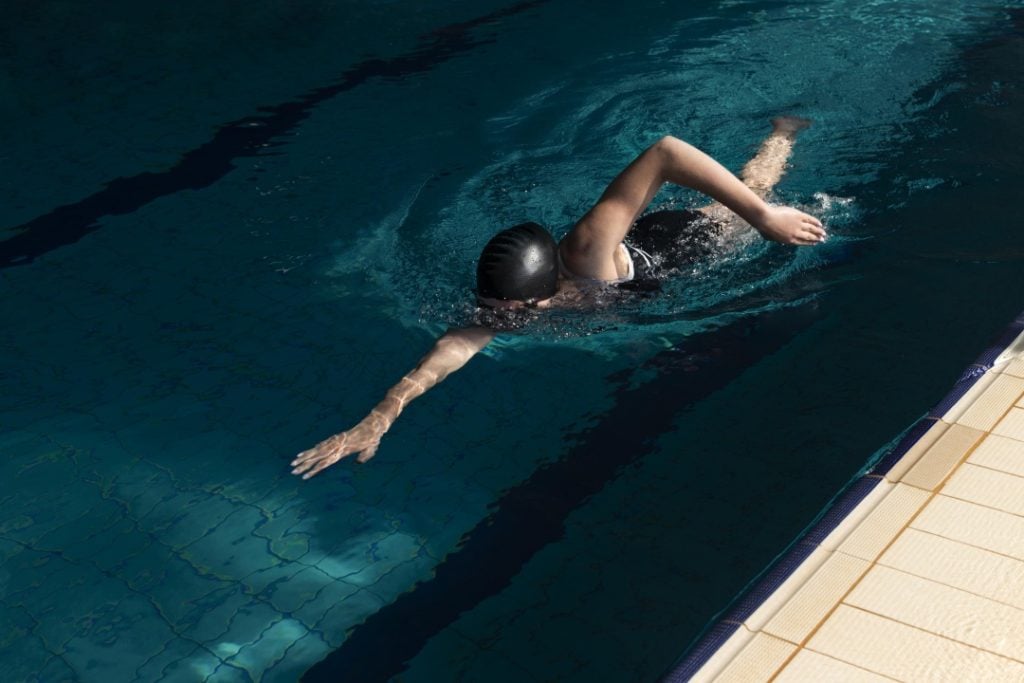Winning hearts doesn’t require a fancy team, swim facilities, or even dry land – all it needs is swimming. Swimming makes people, from toddlers to seniors, easier, agile, active, and healthier. Swimming is not just a sport – it is a life tool. Swimming keeps you fit while assisting in maintaining a state of freedom. Moving bodies and free minds elevate an individual’s mental and physical condition. Comber’s studies confirm that swimmers often enjoy prolonged lifespans and report having better moods. Furthermore, it helps people focus, sleep, and remain mobile throughout old age. Speed and strength are not prerequisites to commencing swimming; you need to show up, that’s it!
Health Benefits Across All Ages
It doesn’t matter what stage of life you are in, swimming will always be beneficial—the Centers for Disease Control states that swimming aids in sleeping while improving overall mental health. Similar to how football betting — Arabic “مراهنات كرة القدم” — brings excitement and focus, swimming boosts brain clarity and emotional balance. Additionally, swimming vastly reduces the chances of chronic illnesses like diabetes. In older adults, swimming helps maintain heart health and eases the symptoms of arthritis. At the same time, children improve coordination and increase lung capacity through swimming. Different high-impact sports tend to harm your joints, but swimming gently strengthens them while looking after your body. Hence, doctors prescribe swimming for recovery; swimming in motion is healing.
With everything going on, mental rest is difficult to come by. Swimming is known to help clear the head, as the repetitive strokes lower cortisol levels. The sound of water and deep breathing are equally soothing. Emotional health is vital, and swimming is often recommended to regulate stress for people of all ages, whether five or sixty-five.
Accessibility and Adaptability
The best part about swimming is that “almost anyone” can adapt. Starting does not require commensurate strength, speed, or coordination—only a pool and a bit of patience.
What makes it even easier is that:
- Learning is simple: With a good instructor, anyone can learn the basic strokes within days. Some children can float confidently by the end of the first week.
- Gentle on the body: Those with injuries, disabilities, or joint issues will benefit significantly. NASA even uses pool training to prepare astronauts.
- Easy access: Most schools and community pools offer swimming lessons. In many countries, it’s part of the school curriculum by age 8.
- All-embracing: Water welcomes all ages, bodies, and abilities. From toddlers to seniors, everyone finds their pace and peace in the water.
This creates a situation where swimming offers various options that make it a haven where almost everyone can thrive, not just excel.
One Sport, Multiple Goals
Swimmers—whether chasing medals or simply unwinding after a long day—find something in the water that fits just right. Like how MelBet Facebook Morocco connects fans through their shared love of sport, swimming creates a space where everyone belongs. Olympians rely on technique, endurance, and precision. It’s a space for others to recover, breathe deeper, or feel calm again. Kids learn patience and body awareness. Adults reduce stress and boost circulation. Even during pregnancy, water eases joint pressure. Whether it’s a lane of silence or the thrill of a race, swimming shows up for everyone.
Competitive and High-Performance Pathways
Swimming has become one of the finely polished competitive sports in the world. Athletes train meticulously from local club competitions to the Olympic Games, perfecting every stroke to the split second. It involves strength but also impeccable timing, mental control, and technique. Countries like the USA, Australia, and Japan lead the medal count, but Arab swimmers are catching up quickly. Egyptian swimmer Farida Osman, for instance, shattered African records and bagged medals at the World Championships.
Swimming also helps develop mental fortitude. While the races are short, the preparation takes years. For children and teenagers, competitive swimming provides a sense of structure, helps with goal setting, and teaches patience, which is immensely helpful beyond the pool walls.
Therapeutic and Recreational Focus
Swimming gives active rest to the mind and body. Here is what makes it unique for therapy and recreation:
- Aquatic rehabilitation: Used in rehabilitation centres to treat injuries, arthritis, and muscle atrophy. The water’s resistance builds strength without strain—ideal for long-term healing.
- Low impact: It is suitable for elderly patients, expectant mothers, and people with chronic pain. Water reduces body weight load by up to 90%, easing every step.
- Stress buster therapy helps reduce anxiety and promote calmness. Studies show that just 30 minutes in water significantly lowers cortisol levels.
- This is a no-pressure activity that is excellent for both family time and solo relaxation. There is no goal, just movement. Many adults rediscover joy and freedom simply by floating.
It’s not about testing boundaries, it’s about finding flow, healing quietly, and moving easily. That’s why swimming is more than a workout—it’s a refuge.
A Lifelong Skill with Social Value
Swimming is more than just a hobby; it is a fundamental skill that can be vital in emergencies and is character-building. It fosters connection, confidence, and community for people of all ages, from toddlers to seniors. Here’s how it provides value beyond the pool:
|
Element |
Why It Matters |
|
Water Safety |
Reduces drowning risk—essential in countries with coastlines, rivers, or high temperatures. Learning to swim can be a lifesaving skill from a young age. |
|
Social Interaction |
Builds communication and trust in relays, swim meets, and group lessons. Many lifelong friendships start at the edge of a pool. |
|
Lifelong Accessibility |
Swimming is one of the few physical activities people can do into their 80s and 90s. It helps maintain mobility without stressing the joints. |
|
Employment Opportunity |
Careers in lifeguarding, swim instruction, aquatic therapy, and rehabilitation are in demand—primarily in schools, resorts, and health facilities. |
Whether it’s bonding in swim class or feeling safe on holiday, this skill never expires. It grows with you.
Low-Risk and High-Reward Activity
Swimming is a full-body workout that does not concern joint issues. Doctors recommend swimming for healing arthritis, injury recovery, or strengthening cardiovascular health. Swimming is easier on the knees and spine than contact sports like running or football. If someone suffers from extra weight or chronic conditions, the water’s buoyancy makes supporting them easier.
Swimming can also be good for calorie burning—500 calories in as little as 30 minutes! Swimmers are known to have a lower resting heart rate, stronger lungs, and core strength. Swimming can also be a mental exercise, enhancing relaxation through controlled muscle movement and breathing. That is why many swimmers are found to be more focused and respond to stressors more positively during daily life.
The Ultimate Sport for Everyone
Regardless of your age, race, size, or shape, swimming doesn’t care. It’s not about medals or proving anything—it’s about movement, peace, and letting go. You can float, breathe, or swim however you want. The water welcomes you like an old friend, even if you’re shy or unsure. There’s no judgment here, only space. It’s quiet under the surface. It listens. Water doesn’t ask questions whether you’re nine or ninety, confident or just beginning. That makes swimming so powerful: the pool becomes the only place where being exactly who you are is already enough.

Sharon is an avid writer who has a concentration on nonfiction content. She has been treading the writers’ field for more than ten years and hopes to broaden her experience by delving further into book publishing. In her spare time, she enjoys a good read or movie that takes her back in time.




![‘Jay Kelly’ Review – Noah Baumbach Makes A Case For The Magic Of Movie Stardom [NYFF 2025] ‘Jay Kelly’ Review – Noah Baumbach Makes A Case For The Magic Of Movie Stardom [NYFF 2025]](https://cdn.geekvibesnation.com/wp-media-folder-geek-vibes-nation/wp-content/uploads/2025/11/Jay-Kelly-JKELLY_20240523_15320_C2_R-300x180.jpg)

